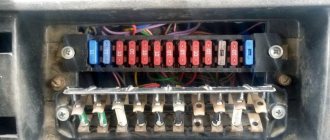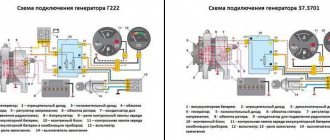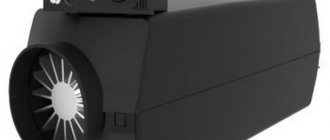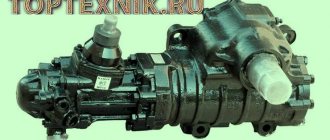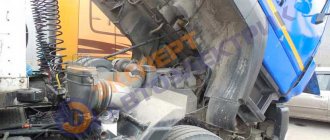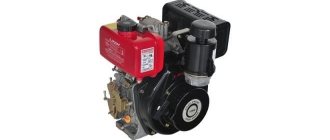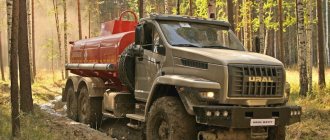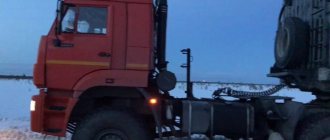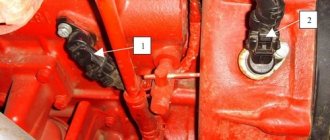For questions regarding the purchase of this equipment (FAW 1020V onboard), terms of credit and leasing, service and warranty, please contact the factory dealers or official representative offices. Delivery of FAW 1020V airborne can be carried out either directly from the manufacturer or from sites in Moscow and other regions of the Russian Federation.
This model retains all the advantages of the FAW 1010 and FAW 1011 models, adding a few more to them: a larger engine, a five-speed gearbox and a modern design.
EXTERNAL NOISE AND KNOCKING IN THE ENGINE
| Adjust the gaps | ||
| Loose or broken valve springs | Inspection during engine disassembly | Repair the engine |
| The timing belt is worn out. Drive tension or support rollers are faulty | Inspection | Replace the belt. Replace the faulty tension or support rollers of the gas distribution mechanism drive |
| Wear of camshaft bearings and cams, crankshaft connecting rod and main bearings, pistons, piston pins, play or seizing in generator bearings, coolant pumps and power steering | Examination | Repair or replacement of parts |
| One or more power unit supports have lost their elasticity or have collapsed | Inspection | Replace the support |
| Low pressure in the oil line (at minimum crankshaft speed at idle, the pressure in the lubrication system of a warm engine must be at least 1.0 bar) | Check the pressure in the lubrication system. You can measure the pressure by connecting a pressure gauge to the oil line by unscrewing the oil pressure sensor | Troubleshoot the lubrication system |
| Worn oil pump drive chain | Checking chain tension after removing the oil pan | Replace the oil pump drive chain |
STRONG ENGINE VIBRATION
| List of possible faults | Diagnostics | Elimination methods |
| Uneven compression across the cylinders is more than 2.0 bar: the clearances in the valve drive are not adjusted, wear or damage to the valves and seats; worn, stuck or broken piston rings | Checking the compression. Compression must be at least 11.0 bar | Adjust the clearances in the valve drive. Replace faulty parts |
| Damage to the insulation of high-voltage devices and circuits - interruptions in sparking | Using an ohmmeter, check for breaks or breakdowns in the ignition coil windings and high-voltage wires | Replace the faulty ignition coil and damaged high-voltage wires. Under severe operating conditions (salt on the roads, frosts alternating with thaws), it is advisable to replace the wires every 3 to 5 years |
| High voltage wires are connected to the ignition coil in the wrong order; one or more wires are disconnected | Inspection | Connect the wires according to the markings on the ignition coil |
| Defective spark plugs: current leakage through cracks in the insulator or carbon deposits on the heat cone, poor contact of the central electrode | Check the spark plugs | Replace defective spark plugs |
| Open or short circuit in the injector windings or their circuits | Check the injector windings and their circuits with an ohmmeter | Replace faulty injectors, ensure contact in electrical circuits |
| The injectors are leaking (overflow) or their nozzles are dirty | Check the tightness and shape of the spray pattern of the injectors | Contaminated injectors can be washed on a special stand. Replace leaking and heavily contaminated injectors. |
| The supports of the power unit have lost their elasticity or have collapsed, their fastening has weakened | Inspection | Replace supports, tighten fastenings |
Equipment
Basic equipment
- Radio tape recorder
- Fog lights
Options
- Air conditioner
- Tent (made in Russia)
- Rugs (made in Russia)
- Additional equipment for vans, awnings: Changing all overall dimensions of any type of van
- Installation of additional doors on any type of van
- Changing the thickness of the foam up to 80 - 100 mm
- Changing the sandwich panel thickness to 80, 100, 150 mm
- Installation of 4 mm plywood (inside) / manufactured goods van
- Additional payment for a recessed lampshade (except for sandwich panels)
- Installation of imported stainless fittings
- Installation of stainless steel or aluminum frames
- Changing the floor covering (corrugated aluminum or poured floor)
- Installation of cellular profile (load securing)
THE VEHICLE DOES NOT HAVE SUFFICIENT RESPONDENCE. JERKS AND DIPS DURING MOVEMENT
| List of possible faults | Diagnostics | Elimination methods |
| The air filter element is clogged | Check the condition of the air filter replacement element | Blow or replace the air filter element |
| Increased resistance to gas movement in the exhaust system | Inspect the exhaust system for dented and damaged pipes, check the condition of the catalytic converter (back pressure) (service station) | Replace damaged exhaust system components |
| Suction of foreign air into the intake tract | Inspect the joints, check the fit of the throttle assembly, absolute pressure and air temperature sensors. Briefly disconnect the brake booster by plugging the intake manifold | Replace gaskets, O-rings, parts with deformed flanges, faulty vacuum booster |
| Incomplete throttle opening | Determined visually with the engine stopped | Adjust the throttle valve actuator |
| Low compression in the engine cylinders (less than 11.0 bar): wear or damage to valves, their guides and seats, stuck or broken piston rings | Check compression | Replace faulty parts |
| Disturbed valve timing | Check valve timing | Establish the correct relative position of the shafts. Check compression |
| The gaps between the electrodes of the spark plugs do not correspond to the norm | Check clearances | By bending the side electrode, set the required gap or replace the spark plugs |
| Heavy carbon deposits on the spark plug electrodes; ingress of carbon particles into the gap between the electrodes | Inspection | Check and replace spark plugs if necessary |
| Damage to the insulation of high-voltage devices and circuits | Using an ohmmeter, check for open or breakdown (short to ground) of the ignition coil windings and high-voltage wires | Replace damaged ignition coil, high-voltage wires |
| There is not enough fuel in the tank | By level indicator and fuel reserve indicator | Add fuel |
| The fuel filter is clogged, the water that has entered the power system is frozen, the fuel pipes are deformed | Check fuel system pressure | Replace the fuel filter. In winter, place the car in a warm garage and blow out the fuel lines. Replace defective hoses and tubes |
| The fuel pump does not create the required pressure in the system | Check the pressure in the fuel system, make sure the fuel module strainer is clean | Clean the fuel module strainer. Faulty fuel pump, pressure regulator, replace |
| Poor contact in the fuel pump power supply circuit (including ground wires) | Checked with an ohmmeter | Clean contacts, crimp wire ends, replace faulty wires |
| Faulty injectors or their circuits | Check the injector windings and their circuits with an ohmmeter (no open or short circuit) | Replace faulty injectors, ensure contact in electrical circuits |
| The air temperature sensor or its circuits are faulty | Check the sensor and its circuits | Restore contact in electrical circuits, replace the faulty sensor |
| The absolute air pressure sensor or its circuit is faulty | You can evaluate the performance of the absolute air pressure sensor using diagnostic equipment at a service station | Restore contact in electrical circuits, replace the faulty sensor |
| The oxygen concentration sensor is faulty | You can evaluate the performance of the oxygen concentration sensor and the reliability of its electrical circuit connections using diagnostic equipment at a service station | Restore damaged electrical circuits. Replace faulty sensor |
| The ECU or its circuits are faulty | To check the ECU, replace it with a known good one. | Replace the faulty ECU |
| The clearances in the valve drive are not adjusted | Check valve clearances | Adjust the clearances in the valve drive |
| Severe wear on the camshaft cams | Inspection during engine disassembly at a service station | Replace the worn camshaft at a service station |
| Loose or broken valve springs | Inspection during engine disassembly | Have the engine repaired at a service station |
| The throttle position sensor or its circuit is faulty | Check the throttle position sensor | Restore contact in electrical circuits, replace the faulty sensor |
| Coolant temperature sensor faulty | Check the sensor resistance at different temperatures with a tester | Restore contact in electrical circuits, replace the faulty sensor |
ENGINE IS OVERHEATING (ENGINE OVERHEATING ALARM IS ON)
| List of possible faults | Diagnostics | Elimination methods |
| Thermostat is faulty | Check that the thermostat is working properly | Replace the faulty thermostat |
| Insufficient coolant | The fluid level is below the “MIN” mark on the expansion tank | Fix leaks. Add coolant |
| Lots of scale in the cooling system | — | Clean the cooling system with a descaling agent. Do not use hard water in the cooling system. Dilute concentrated antifreeze only with distilled water. |
| Radiator cells are dirty | Inspection | Flush the radiator with pressurized water |
| Coolant pump faulty | Remove the pump and inspect the assembly | Replace the pump assembly |
| Cooling fan does not turn on | Check the fan circuits | Restore contact in electrical circuits. Faulty fuse, relay, cooling fan, temperature sensor, ECU - replace |
| Unacceptably low octane number of gasoline | — | Fill your car with fuel recommended by the manufacturer |
| A lot of carbon deposits in the combustion chambers, on the piston heads, valve plates | Inspection after removing the engine cylinder head | Eliminate the cause of carbon formation (see “Increased fuel consumption”, “Increased oil consumption”). Use oil of the recommended viscosity and, if possible, low ash content. |
| Exhaust gas breakthrough into the cooling system through a damaged cylinder head gasket | There is a smell of exhaust gases in the expansion tank and bubbles float to the surface | Replace the cylinder head gasket. Check for flatness of the cylinder head |
Body types
- Onboard
- Manufactured goods van with clad metal coating (coating color is white)
- Manufactured goods van made of galvanized sheet with polymer coating
- Manufactured goods van covered with laminated plywood
- Isothermal van with clad metal coating (coating color white)
- Isothermal van made of galvanized sheet with polymer coating
- Insulated van covered with laminated plywood
- Isothermal van made of sandwich panels coated with clad metal (coating color white)
- Isothermal van made of sandwich panels (outer covering - galvanized sheet with polymer)
- Isothermal van made of sandwich panels coated with plastic
ENGINE COOLING FAN RUNS CONSTANTLY (EVEN WHEN THE ENGINE IS COLD)
| List of possible faults | Diagnostics | Elimination methods |
| Open circuit in the coolant temperature sensor or its circuit | The sensor and circuits are checked with an ohmmeter | Restore contact in electrical circuits. Replace the faulty sensor |
| Fan relay contacts do not open | Checking with a tester | Replace the faulty relay |
| The ECU or its circuits are faulty | Check the ECU or replace with a known good one | Replace the faulty ECU |
THE ENGINE TAKES A LONG TIME TO WARM UP TO OPERATING TEMPERATURE
| List of possible faults | Diagnostics | Elimination methods |
| Thermostat is faulty | Check that the thermostat is working properly | Replace the faulty thermostat |
| Low air temperature (below –15 °C) | — | Insulate the engine: cover the slot on the front bumper with windproof material |
Specifications
Technical characteristics of FAW 1020 VR / FAW 1020 in a 4-door body. cargo-passenger with a 48 hp engine, 5 manual transmission produced from
Basic data
- Start of production:
unknown - End of production:
in production
- Body:
4 doors cargo-passenger
Engine
- Engine capacity, cubic meters see: 970
- Valves per cylinder: 2
- Power, hp: 48
- Achieved at vol. per minute: 5000
- Torque, Nm/rev. per minute: 74/3500
- Maximum speed, km/h: 100
- Fuel consumption (combined cycle), l. per 100 km: 8
- Fuel consumption (outside the city), l. per 100 km: 6
Drive unit
- Drive type: rear
Transmission
- Transmission: Manual
- Number of steps: 5
Suspension
- Front: MacPherson
- Rear: dependent leaf spring
Brakes
- Front: disc
- Rear: drum
Dimensions
- Length, mm: 3998
- Width, mm: 1475
- Height, mm: 1890
- Wheelbase, mm: 2550
- Front wheel track, mm: 1280
- Rear wheel track, mm: 1290
- Ground clearance, mm: 156
Cabin
There are 2 or 5 seats inside. Plastic and fabric are used, and behind the seats there is bare metal, which results in poor sound insulation. The wind noise is perfectly audible, plus the constant hum of the engine.
Ordinary fabric chairs are unlikely to please you with anything. It is uncomfortable to sit due to the small dimensions; the car is narrow and low. Folding the passenger seat opens up access to the engine.
The driver will be pleased with the high visibility due to the large windshield.
In front of the driver is a 4-spoke steering wheel, behind which is an instrument panel consisting entirely of analog gauges. The center of the dashboard is equipped with two round air deflectors, under which there is an outdated stove unit and a standard radio.
Between the seats there is a cup holder, a niche for small items, a massive gearshift lever and a mechanical handbrake.
